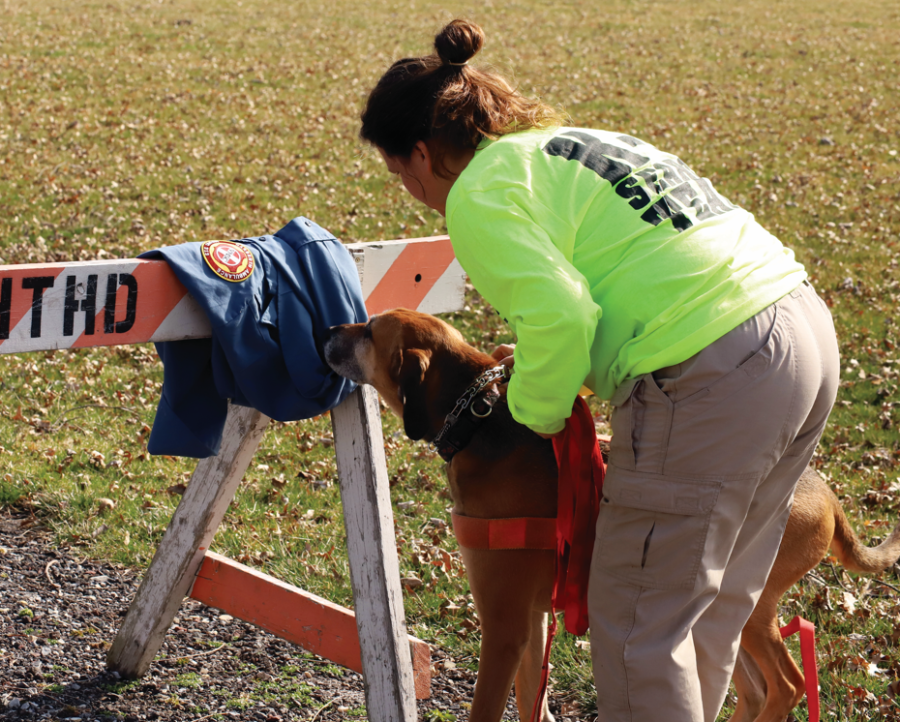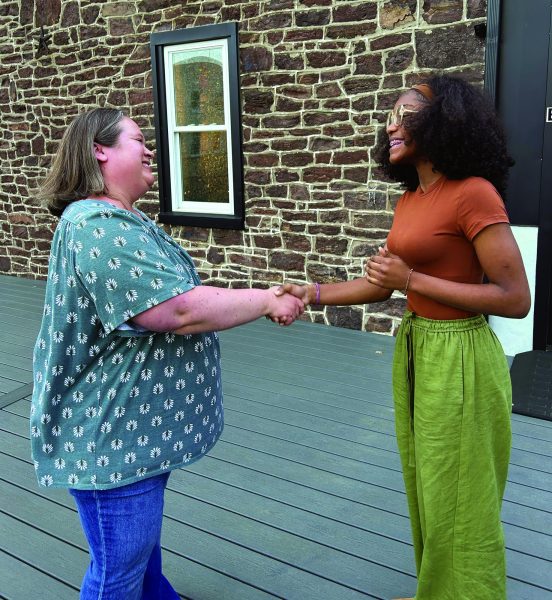Search & rescue team helps local community
By taking part in rescue missions, the Volunteer Medical Service Corps. of Lansdale’s search and rescue team (VMSC) helps to bring people home safely. The team trains both dogs and people to participate in these search and rescue calls.
Through repetitive training and other preparations, the VMSC rescue team aims to help people as best they can, as well as bring the victims they search for back to safety.
According to canine lieutenant Jen Zona, the team makes sure to train regularly.
“We train every week, no matter what,” Zona said.
Search and rescue training varies from dog to dog, but primarily consists of getting the dogs used to finding things based on scent.
According to assistant team leader Dave Boland, rewarding dogs helps to keep them motivated while they are being trained.
“You start off when you’re brand new with treat rewards,” Boland said.
New dogs start out by following a scent trail lined with treats to keep them on the path. As training continues, less rewards are given during the search, and are instead given when the target is found.
In the case of air dogs, who do not use trails left on the ground, their training is similar, but consists of more visual cues instead.
Boland said that repetition is the key to training search and rescue dogs.
When it comes to the humans on the team, many of them learn “through mentoring of experienced handlers,” according to canine handler Larry Byron.
According to Byron, mentoring under more experienced members of the team is the best way to learn because there is “no way to write a book” on the process.
“You can write all the books you want and all it is is a guideline,” Byron said. “Experience and mentoring is really how it’s done.”
Byron also said that having gear prepared and being ready for bad conditions is important for emergency calls.
According to Byron, being ready for the environment is important because the team is often unable to “pull away from the situation to readjust.”
The calls that the team gets are generally irregular and unpredictable. “You hit certain times of the year when we might get more calls than others, but it tends to go and it tends to go in waves,” Byron said.
Byron said that the team gets called out more often around the holidays. The colder weather makes it especially important to have gear prepared.
The search and rescue team allows volunteers to attend practices and help train dogs without necessarily coming out to emergency situations.
According to Zona, if someone is cleared and permitted to volunteer, they can hide during practices for the dogs to find during their training. “We can always use people to hide for the dogs,” Boland said.
According to Boland, there is no skill required to hide for the dogs.
“You just have to have patience and quite frankly be willing to sit in the woods or in an industrial park or in a vacant building for three hours and have dogs just descend upon you and find you,” Boland said.
While many dogs are able to become search and rescue dogs, the best dogs are “any dog with a long nose,” according to canine handler David Bond.
Dogs such as retrievers, hounds and other field and hunting dogs are the best breeds to use when it comes to search and rescue training.






